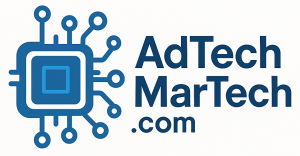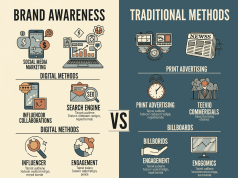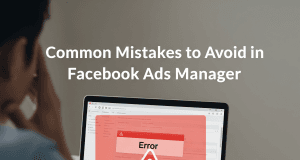In recent years, the advertising landscape has undergone a seismic shift, driven by advancements in technology and data analytics. One of the most significant transformations has been the rise of programmatic advertising. By 2025, programmatic advertising has become a centerpiece of digital marketing strategies, allowing brands to automate the buying and selling of ad space in real time. This article will explore the current state of programmatic advertising, its benefits, challenges, and what the future might hold.
Understanding Programmatic Advertising
Programmatic advertising refers to the automated process of purchasing digital advertising space using data-driven technology. Instead of relying on traditional negotiation processes between buyers and sellers, programmatic platforms leverage algorithms to streamline buying, targeting, and placement.
Key Components
- Demand-Side Platforms (DSPs): These are tools used by advertisers and agencies to buy ad inventory. They analyze data to determine the best ad placements for reaching specific target audiences.
- Demand-Side Platforms (DSPs): These are tools used by advertisers and agencies to buy ad inventory. They analyze data to determine the best ad placements for reaching specific target audiences.
- Supply-Side Platforms (SSPs): These platforms help publishers manage their ad space inventory, allowing them to sell ad impressions to the highest bidder.
- Supply-Side Platforms (SSPs): These platforms help publishers manage their ad space inventory, allowing them to sell ad impressions to the highest bidder.
- Ad Exchanges: These platforms facilitate the buying and selling of ad inventory from multiple advertisers and publishers, acting as a marketplace.
The Importance of Data
At the heart of programmatic advertising is data. Advertisers use first-party data (directly from consumers), second-party data (from other companies), and third-party data (aggregated from various sources) to identify and target audiences accurately. This data-driven approach allows for more personalized advertising, increasing engagement rates and conversion.
The Benefits of Programmatic Advertising
- Efficiency: Automation reduces the time spent on manual processes, enabling marketers to focus on strategy rather than negotiation.
- Efficiency: Automation reduces the time spent on manual processes, enabling marketers to focus on strategy rather than negotiation.
- Precision Targeting: With access to vast amounts of data, advertisers can target specific demographics, behaviors, and even individual users, ensuring their ads reach the right audience.
- Precision Targeting: With access to vast amounts of data, advertisers can target specific demographics, behaviors, and even individual users, ensuring their ads reach the right audience.
- Real-Time Optimization: Programmatic platforms allow for instant adjustments based on performance metrics, enabling advertisers to allocate budgets effectively and maximize ROI.
- Real-Time Optimization: Programmatic platforms allow for instant adjustments based on performance metrics, enabling advertisers to allocate budgets effectively and maximize ROI.
- Scalability: Brands can easily scale their advertising efforts across multiple channels and platforms, reaching a broader audience without a proportional increase in resources.
Challenges Facing Programmatic Advertising
While programmatic advertising presents numerous advantages, it also comes with its challenges:
- Ad Fraud: As the industry has grown, so has the prevalence of ad fraud, including bot traffic and fake impressions. Ensuring ad spend goes to legitimate placements is a critical concern for advertisers.
- Ad Fraud: As the industry has grown, so has the prevalence of ad fraud, including bot traffic and fake impressions. Ensuring ad spend goes to legitimate placements is a critical concern for advertisers.
- Data Privacy: With increasing regulations like GDPR and CCPA, marketers must navigate complex landscapes to ensure compliance while still leveraging data effectively.
- Data Privacy: With increasing regulations like GDPR and CCPA, marketers must navigate complex landscapes to ensure compliance while still leveraging data effectively.
- Brand Safety: Advertisers are concerned about where their ads appear. Negative associations with inappropriate content can damage brand reputation.
- Brand Safety: Advertisers are concerned about where their ads appear. Negative associations with inappropriate content can damage brand reputation.
- Complexity: The programmatic ecosystem can be complicated, with many players and technologies involved. Advertisers require specialized knowledge to navigate it effectively.
The Future of Programmatic Advertising
Looking ahead, several trends will shape the future of programmatic advertising:
- Increased Focus on AI and Machine Learning: AI technologies will play a pivotal role in enhancing targeting accuracy and optimizing ad placements more effectively. These technologies will also help mitigate issues like ad fraud.
- Increased Focus on AI and Machine Learning: AI technologies will play a pivotal role in enhancing targeting accuracy and optimizing ad placements more effectively. These technologies will also help mitigate issues like ad fraud.
- Privacy-First Strategies: As consumer data protection becomes paramount, innovative solutions such as contextual targeting (targeting based on website content) will gain importance.
- Privacy-First Strategies: As consumer data protection becomes paramount, innovative solutions such as contextual targeting (targeting based on website content) will gain importance.
- Omnichannel Approaches: Advertisers will increasingly seek to integrate programmatic strategies across various channels, including digital, TV, and even out-of-home advertising.
- Omnichannel Approaches: Advertisers will increasingly seek to integrate programmatic strategies across various channels, including digital, TV, and even out-of-home advertising.
- Enhanced Analytics: Advances in analytics will provide deeper insights into campaign performance, allowing marketers to refine their strategies and actionable insights to optimize results continually.
Conclusion
Programmatic advertising has fundamentally changed how brands approach digital marketing in 2023, offering unprecedented efficiency and targeting capabilities. As the industry continues to evolve, understanding the dynamics of this transformative approach is essential for marketers aiming to stay ahead in a competitive landscape. By embracing automation, leveraging data responsibly, and adapting to emerging trends, brands can harness the full potential of programmatic advertising and achieve their marketing goals.









